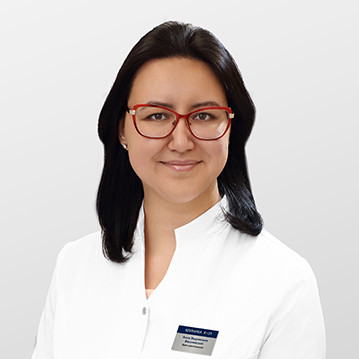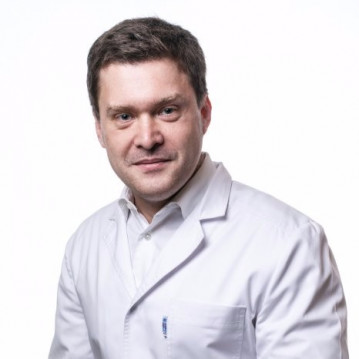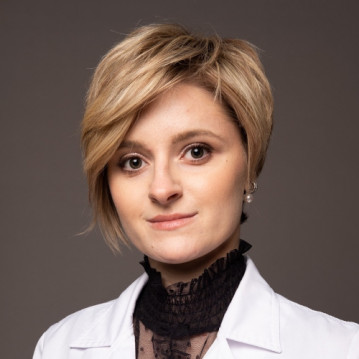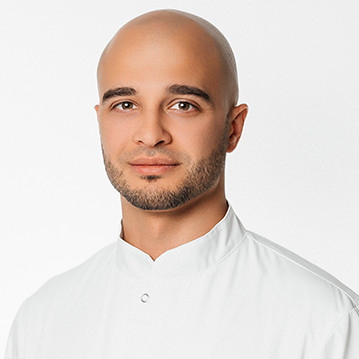Hardware study - MRI of the foot - allows you to visualize the hard and soft tissues of this part of the body. The distal part of the leg performs buffer, support, lifting, balancing functions, so any pathology in it can limit a person’s mobility, and in case of complications, cause disability. Using this method, it is possible to diagnose injuries, developmental anomalies, inflammation, tumors, destructive processes and deformities.
The "K+31" Medical Center in Moscow is equipped with modern high-precision tomographs that help to perform examinations of the foot, spine, head, joints, all parts of the brain, neck vessels, abdominal organs and small pelvis.
Features of foot MRI
The foot performs many functions and provides movement for a person. Being a complexly organized part of the body, it is very vulnerable to injury, the development of pathologies, damage, deformation of soft tissues and bones. Timely diagnosis helps to start the right treatment in the early stages of the disease and prevent serious consequences.
Magnetic resonance imaging is a non-invasive, painless way to perform cross-sectional images of an organ, part of the body, and the sections can be made at any angle.
The method consists in creating a strong magnetic field around a part of the body. Waves passing through all biological structures act differently on the nuclei of hydrogen atoms in tissues. The pulses are recorded to produce black and white images with highlights and shadows.
The results are layered images with a step between them of 2-5 mm. Images make it possible to examine the most delicate structures, small joints and blood vessels, and to detect tumors of extremely small sizes at the initial stages of development.
MRI, CT, ultrasound, X-ray?
The foot is predominantly a “bone” structure, but there are a lot of soft, “wet” tissues in it, which are well visualized by MRI - muscles, blood vessels, tendons, nerves. On the pictures, you can also see large bone injuries, cracks, however, a narrowly focused diagnosis of “dry” tissues - bones, cartilage - is best done on CT. Both methods are used as alternatives to each other, and in clinical practice, often as complementary studies to clarify the diagnosis.
What is better in the diagnosis of the foot - MRI, CT, ultrasound, X-ray?
- X-ray shows bone tissue well, but can only reveal large lesions and is completely uninformative for small ones. If the angle is wrong, it is undesirable to duplicate the study. It is associated with a small dose of radiation and carries certain health risks.
- CT is unable to show all pathological processes in the soft tissues, the spread to neighboring areas, the nature of tumors, so MRI of the foot is used more often.
- Ultrasound is performed if there is a task to examine the state of the vessels, the nature of the blood flow in the lower limb. With regard to bone injuries, anomalies of cartilage tissue, tendons, muscles, the most informative method is MRI.
In clinical practice, the doctor usually prescribes MRI as the main diagnostic method. If there is a need to clarify the condition of bone structures, cartilage, blood vessels, an additional examination is prescribed using computed tomography or ultrasound.
Types and modes of research
MRI diagnostics can have different purposes, so the doctor chooses the type of its implementation based on the patient's condition, the alleged pathology, and the conditions for conducting it.
The main types of MRI examinations:
- Native, no contrast. It is used to study the nature of inflammatory processes, blood flow, soft tissue damage.
- With contrast enhancement. It is used in cases where there is a suspicion of benign or malignant neoplasms. Diagnostics allows you to determine the nature of the tumor, its histological features, exact localization, spread to neighboring structures, which in most cases eliminates the need for a biopsy.
The tomograph is set to the main mode, which produces T1, T2 weighted images - the main ones for determining most foot pathologies. In some cases, STIR fat suppression, PD proton plane weighting, and subsequent injection of Gd-DTPA contrast are necessary, which are used to refine the data obtained.
What does an MRI of the foot show
Often, only the foot is examined, but often at the same diagnostic it becomes necessary to analyze the condition of the ankle joint and the foot at the same time. The decision on this is made by the referring physician - traumatologist, orthopedist, surgeon, rheumatologist, etc.
In the pictures in different planes, you can see all the anatomical structures of the organ - small joints, neoplasms, blood vessels.
What MRI can show:
- Cyst, abscess, site of inflammation, infiltrate, phlegmon.
- Benign or malignant tumors, metastases. Process stage, haraneoplasms.
- Hematomas.
- Osteoporosis, osteonecrosis, osteosclerosis, osteomyelitis.
- Bursitis, tendinitis.
- Diabetic angiopathy.
- Bone fractures, bone contusion.
- Soft tissue bruises, tendon rupture, foot deformities, flat feet.
- Congenital anomalies of bones, all structures of the foot.
- Heel MRI will show plantar fasciitis (calcaneal spurs), fascial rupture, dysplasia, ganglion cysts, epiphysitis if present.
- MRI of the toes allows diagnosing gout, all types of arthritis, arthrosis, tunnel syndrome, Morton's neuroma, hallux valgus.
Depending on the alleged pathology, the doctor chooses the type of examination, and also decides on the appointment of additional diagnostic studies.
Before referring the patient for diagnosis, the specialist studies all the indications and contraindications.
Indications for MR diagnostics
The most common and main indication for research is foot pain. This symptom may indicate various pathologies or injuries, so only accurate visualization of the structure will help identify the cause and clarify the nature of the process.
Indications for MR imaging of the foot:
- Persistent pain, increasing pain.
- Restriction of mobility in the limb, hematomas not associated with trauma, edema.
- Significant deformity of the leg, forced position, clubfoot, "bumps", curvature of the toes, difficulty lifting the foot off the floor.
- Suspicion of neoplasms.
- Symptoms of arthritis, bursitis, arthrosis, gout, "diabetic foot".
- Signs of abscess, osteomyelitis, plantar fasciitis, tendinitis, Sever's disease.
- Atherosclerosis with complications in the form of pain, impaired blood flow in the lower limb.
- Injuries, severe bruises, torn ligaments.
Diagnosis can also be prescribed in the process of preparing for surgery on the leg, in order to clarify the type and stage of the pathological process, study the anatomy of the foot and deformity, and decide on the tactics of future surgical intervention.

























